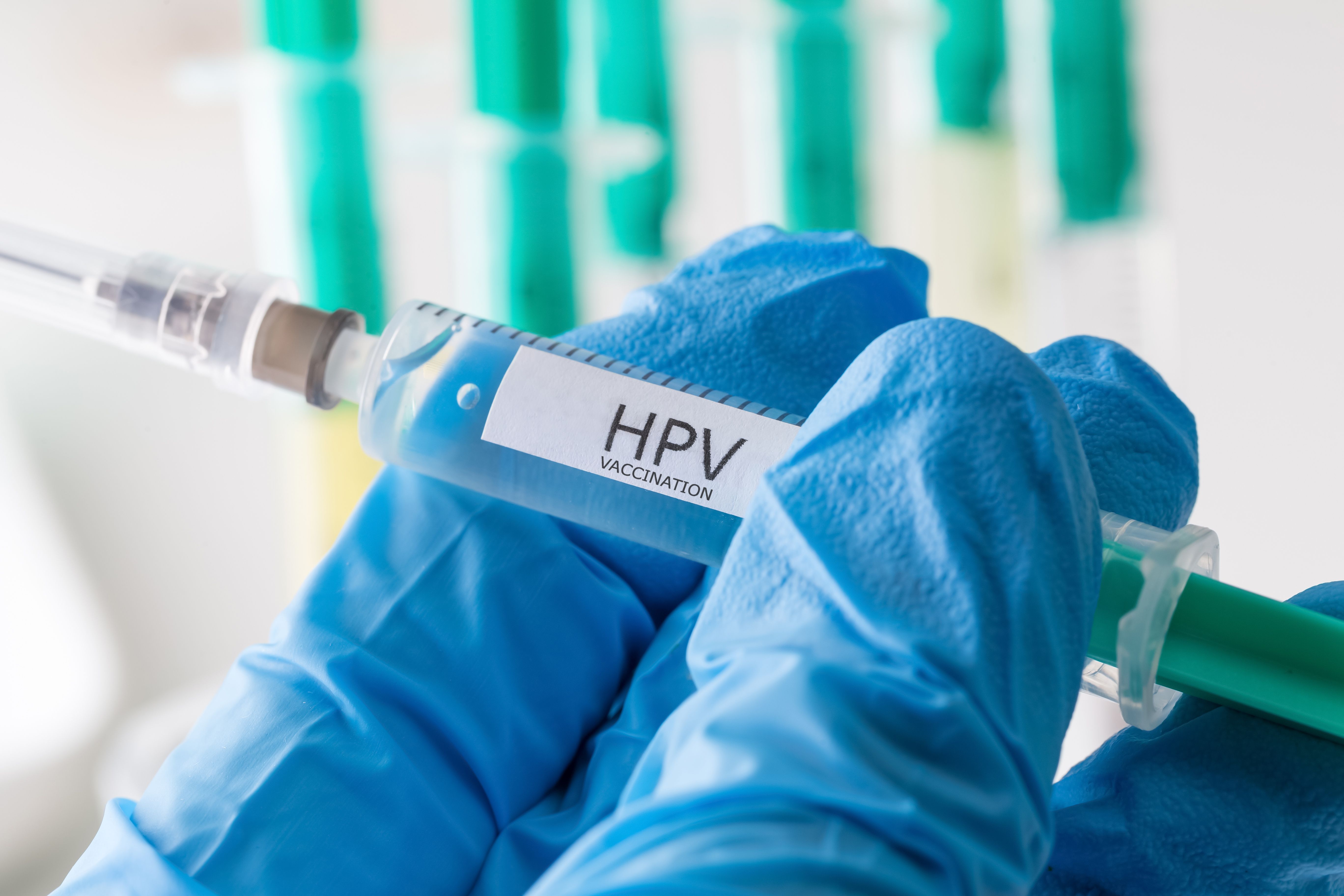HPV vaccination coverage of US-children aged 9-17 years in 2022
According to the report authors, girls were more likely to receive 1 or more HPV vaccine doses compared to boys (42.9% vs 34.6%).
HPV vaccination coverage of US-children aged 9-17 years in 2022 | Image Credit: © Tobias Arhelger- © Tobias Arhelger - stock.adobe.com.

Vaccination prevents and controls Human papillomavirus (HPV), the most common sexually transmitted infection (STI) in men and women in the United States. According to data from a National Health Interview Survey and the Centers for Disease Control and Prevention (CDC), in 2022, 38.6% of children aged 9 to 17 years received 1 or more HPV vaccine doses.1
HPV vaccination has been recommended in the United States for girls since 2006 and for boys since 2011, with multiple doses required for boys. Vaccination can begin at age 9, and is targeted for children aged 11 to 12 years to prevent and control associated outcomes of HPV including: genital warts, precancerous lesions, and certain cancers, such as cervical, vaginal, vulvar, anal, penile, and oropharyngeal.1
Parent-reported data from the 2022 National Health Interview Survey is used in the CDC report to describe the percent change of children aged 9 to 17 years who received at least 1 dose of the HPV vaccine by "selected sociodemographic and health characteristics," the report stated.1
That National Health Interview Survey is a nationally representative household survey of the United States civilian noninstitutionalized population, and is conducted continuously throughout the year by the National Center for Health Statistics.1
Overall, for 2022, 38.6% of children received 1 or more HPV vaccine doses. That percentage increased with age, as 7.3% of children aged 9 to 10 years received 1 or more dose, 30.9% of children aged 11 to 12 years, 48.8% among children aged 13 to 14 years, and 56.9% among children aged 15 to 17 years.1
According to the report authors, girls were more likely to received 1 or more HPV vaccine doses compared to boys (42.9% vs 34.6%).1
The percentage of children who received 1 or more vaccine dose also varied by race and Hispanic origin, as Hispanic children were less likely to receive 1 or more doses compared to White non-Hispanic children (34.4% vs 39.9%). Observed differences between Asian non-Hispanic, Black non-Hispanic, White, and Hispanic children were not considered significant.1
Health insurance was also a factor in the percentage of children who received 1 or more vaccine doses, as was parental education and family income.1
Children with private health insurance (41.5%) were more likely to receive 1 or more HPV vaccinations compared to children with Medicaid (37%), other government sponsored coverages (30.2%), and those without insurance (20.7%). Children with Medicaid were more likely to receive vaccine doses compared to those without insurance.1
Increasing parental education was associated with higher vaccination percentages in children, as 31.1% of children who lived in households with parents whose highest education was high school or less. For those with parents who had an associate's degree or some college experience, 40.6% of children received 1 or more vaccine doses. For children with parents whose highest education was a bachelor's degree or higher, 42.1% received at least 1 HPV vaccine dose.1
For family income, 29.9% of children with a family income of less than 100% of the federal poverty level received 1 or more vaccine doses, compared to 45.7% among children with a family income of 400% or more of the federal poverty level.1
According to the US Department of Health and Human Services, $27,750 per year was the 100% federal poverty level in 2022 for a family or household size of 4 in the 48 contiguous states (not Alaska and Hawaii). The 400% poverty level for the same household was $111,000 per year.2
Additionally, children with disability were more likely to receive HPV vaccination compared to those without disability (44.1% vs 37.7%). The same was true for children living in "large metropolitan areas (39.4%), large fringe metropolitan areas (41.1%), and medium and small metropolitan areas (39.4%) compared with those living in nonmetropolitan areas (30.0%)," stated the authors.1
According to the report, the CDC recommends a 2-dose series with 2 doses given 6 to 12 months apart for children aged 11 to 12 years, though vaccination series can start when children are at age 9 years. For those with a weakened immune system and those starting at age 15 years or older, a 3-dose series is recommended.1
References:
1. Villarroel MA, Galinsky AM, Lu PJ, Pingail C. Human Papillomavirus vaccination coverage in children ages 9-17 years; United States, 2022. National Center for Health Statistics. February 2024. Accessed May 10, 2024. https://www.cdc.gov/nchs/products/databriefs/db495.htm#Data%20sources%20and%20methods
2. 2022 poverty guidelines: 48 contiguous states (all states except Alaska and Hawaii). US Department of Health and Human Services. PDF. Accessed May 10, 2024. https://aspe.hhs.gov/sites/default/files/documents/4b515876c4674466423975826ac57583/Guidelines-2022.pdf
Newsletter
Access practical, evidence-based guidance to support better care for our youngest patients. Join our email list for the latest clinical updates.
Having "the talk" with teen patients
June 17th 2022A visit with a pediatric clinician is an ideal time to ensure that a teenager knows the correct information, has the opportunity to make certain contraceptive choices, and instill the knowledge that the pediatric office is a safe place to come for help.